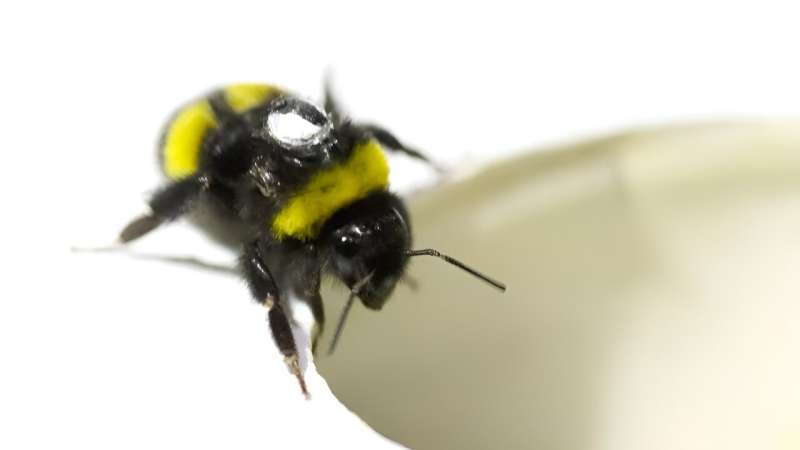This article has been reviewed according to Science X's editorial process and policies. Editors have highlighted the following attributes while ensuring the content's credibility:
fact-checked
peer-reviewed publication
trusted source
proofread
Bumblebees' sense of direction rivals that of humans, study shows

Bumblebees have a great capacity to navigate despite their small brain size. This is borne out of new research conducted at Lund University in Sweden. The research results can potentially benefit the development of navigation robots in crisis situations where GPS does not work, for example.
According to the study, published in the Proceedings of the National Academy of Sciences, bumblebees appear capable of navigating as well as vertebrates can, and in some respects their sense of direction is superior to that of humans. The study shows that bumblebees can store several spatial memories in their brain to be used when needed.
The bumblebees' navigation ability is based on their constant monitoring of direction and distance while flying. Using this information, the insects can store their navigation experiences in their long-term memory through spatial vectors created in the brain. This ability allows them to fly straight home after long and difficult-to-navigate journeys.
"Our study provides important keys to understanding how bumblebees can seemingly perform navigational feats similar to those of mammals despite their brain being the size of a pinhead," says Rickesh Patel, a researcher in sensory biology at Lund University.
The new research results can be used to inspire technological applications, for example in the development of robots, particularly where complex navigation tasks need to be tackled using solutions that are economical in terms of computation and energy. Patel says that the new discoveries also ultimately have the potential to be used in robotics, which will have a more widespread impact.
For example, the way the bumblebees handle geographic information has the potential to benefit autonomous navigation robots that need to operate without GPS satellites. Robots with this ability can be very valuable in search and rescue missions in conjunction with crises such as earthquakes, in war zones or in caves where satellite signals can be difficult to use.
Patel and his colleagues believe that the study is also of general interest in terms of how we view animals, since it shows that insects can perform complex navigation like humans do despite their small brains and relatively limited cognitive abilities.
More information: Rickesh N. Patel et al, Parallel vector memories in the brain of a bee as foundation for flexible navigation, Proceedings of the National Academy of Sciences (2024). DOI: 10.1073/pnas.2402509121
Journal information: Proceedings of the National Academy of Sciences
Provided by Lund University





















